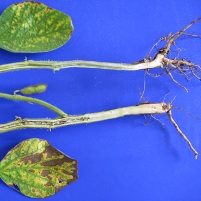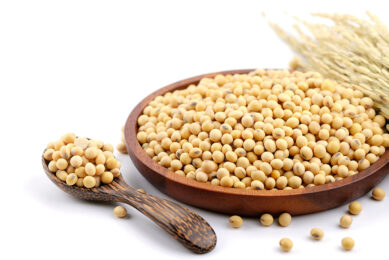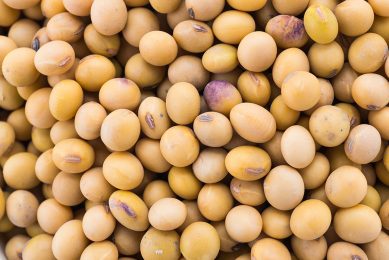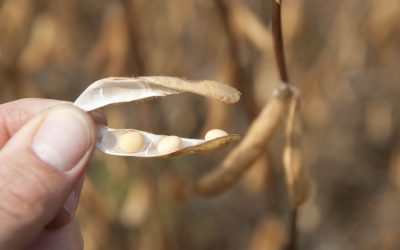Simple SDS detection in soybean seedlings

A simple, cheap lab test developed at Southern Illinois University Carbondale can precisely detect Sudden Death Syndrome, a costly fungal disease, in soybean seedlings. Once commercialized, its use will help breeders produce SDS-resistant soybean varieties much faster than they can now.
“You can do a reliable assay in the greenhouse in a plastic cup and four
weeks later, you’ll see the result,” said David A. Lightfoot, a biotechnologist
in SIUC’s College of Agricultural Sciences who developed the procedure. “The
seedlings develop the leaf symptoms and the root rot or they don’t. It works
every time, and the labor cost is very low — about $1 per assay.”
Hit
or miss
Not so long ago, breeding SDS-resistant soybean varieties was pretty much hit or miss.
Breeders would plant a bunch of beans in a flock of fields and hope the disease
would show up somewhere by the end of the growing season. If it did, they could
make breeding crosses with the survivors and repeat the process during the next
season.
But sometimes the disease didn’t appear, and sometimes when it did,
it didn’t behave normally, disappearing mid-season. In addition, SDS resistance is not the only part of the equation. Breeders
also must incorporate other traits, such as yield and adaptability, when
developing new lines.
Eureka!
In 1994, Lightfoot and
colleagues began working on an assay that could quickly pinpoint seedlings
that could withstand SDS. “We tried all sorts of things before we hit the
‘Eureka!'” Lightfoot said. “People had done two things wrong in the past (in
attempts to develop an assay). They’d grown the fungus on rich media, so it
wasn’t hungry (which could lead to false negatives). The other mistake was to
just jab the plant with the fungus or put it in humongous quantities in the
ground, making the disease inevitable (leading to false positives). The amount
of fungus and its aggressiveness are critical parameters in SDS — much more so than in other diseases.”
Lightfoot
grows his fungus on a mix of cornmeal, sand, mineral salts and agar, a
jelly-like substance made from algae. That’s enough to keep it alive but not
“fat, lazy or happy,” Lightfoot said. Graduate students, armed with spades and
pails of the mix, then dig that mix into piles of soil, turning it until the
fungus-laden growing medium is distributed evenly throughout. Vulnerable
seedlings planted in that infected soil will contract the disease; seedlings
with resistance potential won’t.
Related website:
Southern Illinois University
Carbondale
To receive more animal feed news, subscribe
here
(Source: Newswise)
Join 26,000+ subscribers
Subscribe to our newsletter to stay updated about all the need-to-know content in the feed sector, three times a week. Beheer
Beheer









 WP Admin
WP Admin  Bewerk bericht
Bewerk bericht